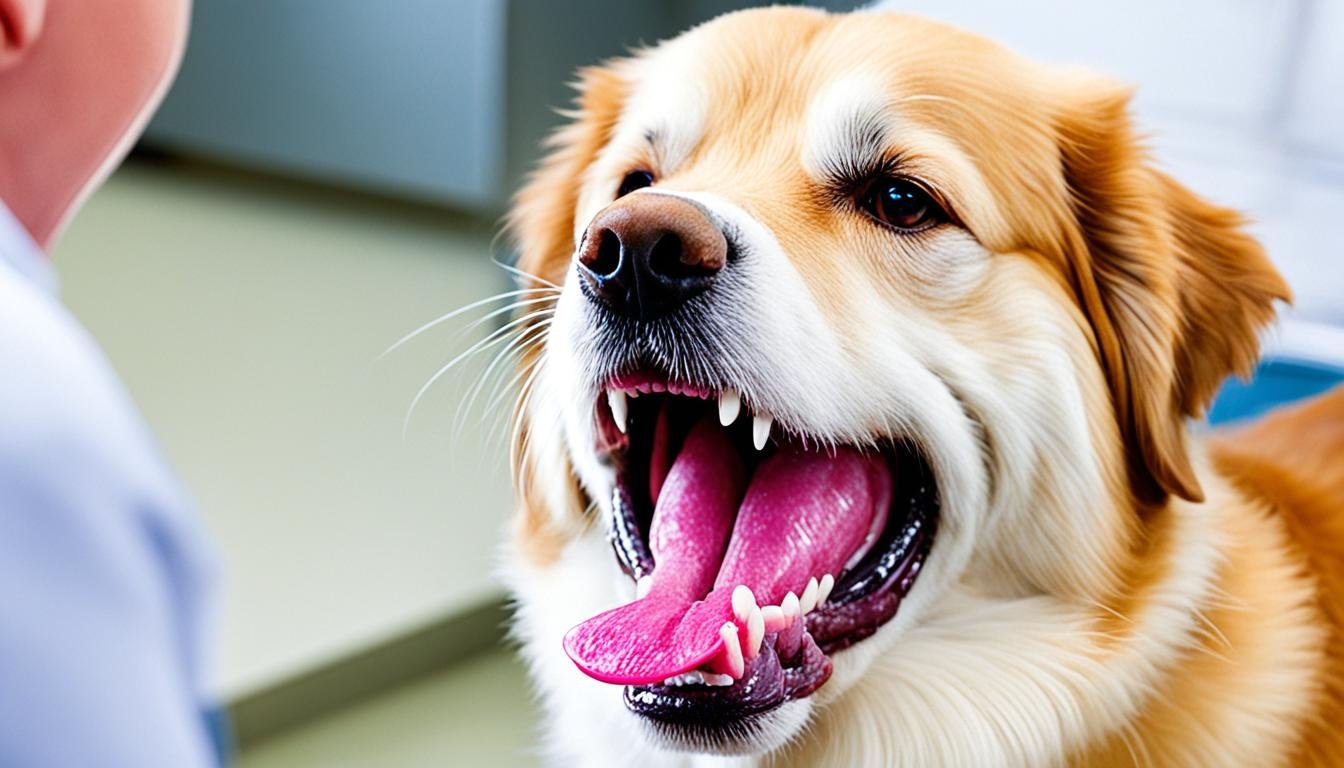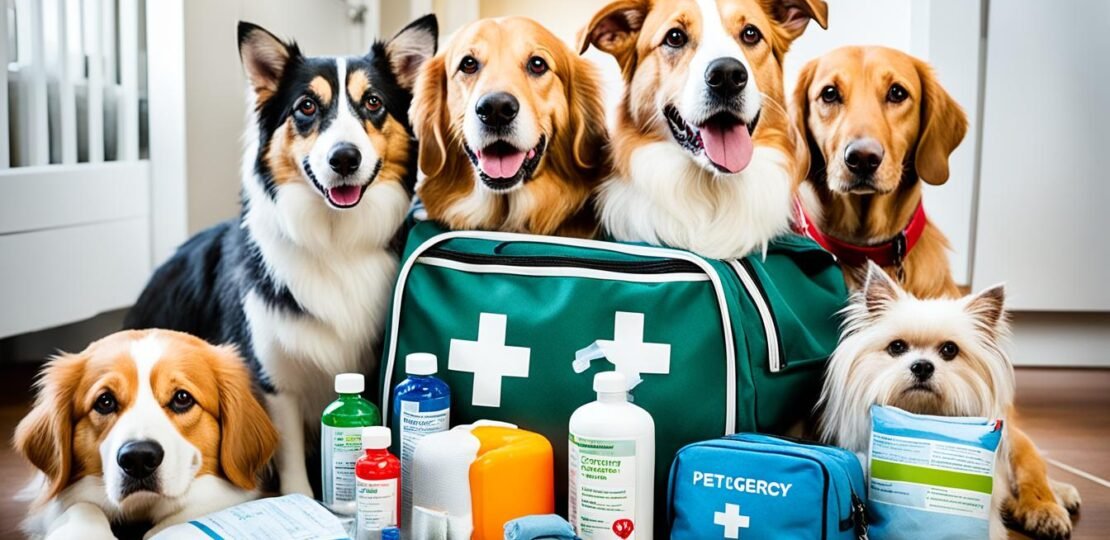
Welcome to our comprehensive guide on pet emergency preparedness. When it comes to our furry friends, their safety and well-being during emergencies are of utmost importance. Whether it’s a natural disaster or a sudden medical emergency, being prepared can make all the difference. In this guide, we’ll provide you with essential tips and information on how to ensure the safety of your beloved pets in times of crisis.
From creating an emergency plan to building a pet emergency kit, we’ll walk you through everything you need to know to protect your pets. We’ll also provide insights on ensuring pet safety during evacuations, administering pet first aid, and finding pet emergency shelters. By following our guide, you’ll be equipped with the knowledge and tools to navigate any emergency situation with confidence.
Whether you have a dog, cat, or any other type of pet, it’s crucial to be prepared for the unforeseen. So, let’s dive in and learn how to safeguard our furry companions during times of crisis. Your pet’s well-being is worth it!
Creating an Emergency Plan for Your Pets
Having a well-thought-out emergency plan is crucial for the safety and well-being of your pets. In times of crisis, knowing what steps to take can make all the difference. In this section, we will guide you through the process of creating an effective emergency plan that covers identification, communication, and evacuation strategies.
Identification plays a vital role in reuniting lost pets with their owners during emergencies. Ensure your pets are microchipped and wearing visible identification tags at all times. Keep their information updated with your contact details and an emergency contact person who can be reached if you are unavailable. This will expedite the process of locating and returning your pets to you.
Communication is key when it comes to emergencies. Establish a clear communication plan with your family members to ensure everyone understands their role and responsibilities. Include your pets in this plan by discussing how to best care for them during different scenarios. Assign specific tasks, such as who will grab the pet emergency kit or secure the pets during evacuation.
Evacuation strategies are crucial for ensuring the safety of both you and your pets. Research pet-friendly evacuation shelters or hotels in your area ahead of time. Create a list of these options, including their contact information and any specific requirements they may have. In addition, designate a safe meeting point for your family and pets in case you become separated during an emergency.
Here are some additional tips to consider:
- Practice evacuating with your pets so they become familiar with the process, making it less stressful during a real emergency.
- Keep a list of pet-friendly accommodations and their pet policies in your emergency kit.
- Alert local rescue services and animal control agencies about your pets in case they need assistance in locating or rescuing them.
Remember, having a well-organized emergency plan for your pets will provide you with peace of mind and increase the chances of keeping your beloved furry companions safe during challenging times.
| Emergency Plan Checklist | Status |
|---|---|
| Microchip your pets and keep their information updated | ✓ |
| Ensure your pets wear visible identification tags | ✓ |
| Establish a clear communication plan with your family members | ✓ |
| Research pet-friendly evacuation shelters and hotels | ✓ |
| Create a list of pet-friendly accommodations | ✓ |
| Designate a safe meeting point for your family and pets | ✓ |
Building a Pet Emergency Kit
A properly stocked and easily accessible pet emergency kit is essential for any emergency situation. Just as you would have a first aid kit for yourself, having a dedicated kit for your pet can help ensure their safety and well-being during unexpected events. In this section, we will outline the must-have items for your pet’s emergency kit and provide guidance on how to maintain and update it regularly to ensure its effectiveness.
Must-Have Items for Your Pet’s Emergency Kit
When assembling your pet’s emergency kit, it’s important to include essential items that will meet their basic needs in case of an emergency. Here are the key items you should include:
- Food and Water: Pack enough dry or canned food to last your pet at least three days. Remember to choose food that has a long shelf life and rotate it regularly to prevent spoilage. Also, pack a sufficient supply of fresh water in sealed containers.
- Medications and Medical Records: Include a one-week supply of any necessary medications your pet takes, along with copies of their medical records, vaccination history, and identification documents.
- Comfort Items: Don’t forget to pack items that will provide comfort to your pet during stressful times. This can include their favorite toy, blanket, or bedding.
- Leashes, Harnesses, and Carriers: Ensure you have sturdy leashes, harnesses, or carriers to safely transport your pet if evacuation is necessary.
- Sanitation Supplies: Pack disposable waste bags, litter, litter box, and any other necessary supplies for your pet’s hygiene needs.
Remember that every pet is unique, so consider any specific needs they may have when assembling their emergency kit. For example, if your pet requires special dietary restrictions or has specific medical needs, make sure to include the necessary supplies.
Maintaining and Updating Your Pet’s Emergency Kit
Creating a pet emergency kit is not a one-time task. It’s important to regularly check and update the kit to ensure it remains effective. Here are some tips for maintaining and updating your pet’s emergency kit:
- Check expiration dates: Regularly inspect and replace any expired food, medications, or other perishable items in your pet’s emergency kit.
- Keep it accessible: Store the emergency kit in a designated, easily accessible location, so you can quickly grab it in case of an emergency.
- Update contact information: Review and update your pet’s identification information, emergency contacts, and any relevant documents in the kit.
- Adjust for seasonal changes: Consider the changing seasons and update your pet’s emergency kit accordingly. This may include adding warm blankets during winter or additional water supplies during hot summer months.
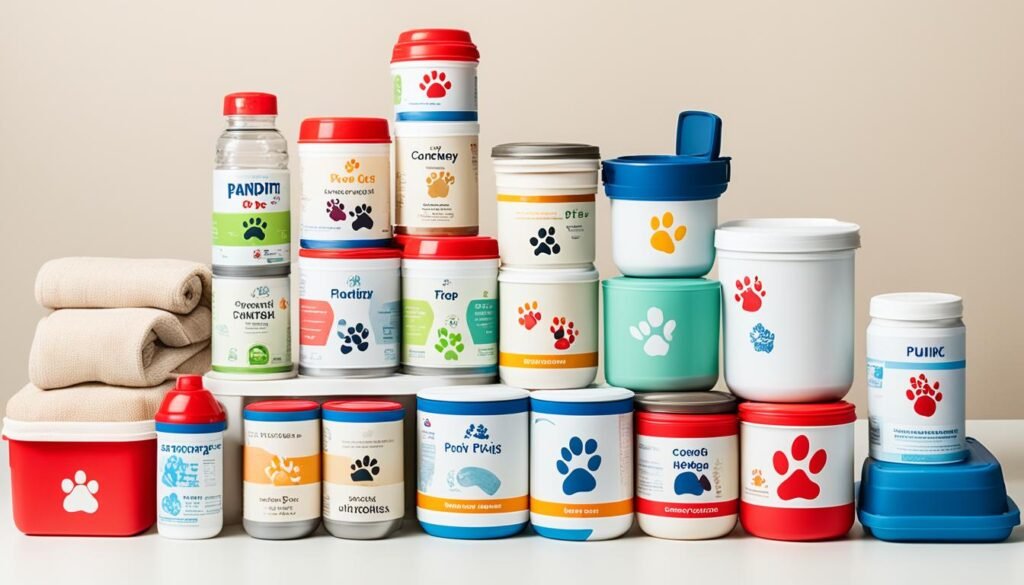
“Having a well-prepared pet emergency kit can provide peace of mind and ensure that you can promptly respond to your pet’s needs during emergencies.” – Dr. Lisa Thompson, Veterinarian
Ensuring Pet Safety During Evacuations
When a disaster strikes or emergency evacuation becomes necessary, the safety of your pets should be a top priority. Planning ahead and taking the necessary precautions can make a significant difference in ensuring their well-being. Here are some essential pet evacuation tips:
- Secure your pet: During travel, it’s important to have proper restraints in place to keep your pet safe. Use a secure leash or harness for dogs and carriers or crates for cats and smaller pets. This will prevent them from escaping or getting injured during transit.
- Ensure identification: Make sure your pets have proper identification tags or have microchips implanted. This will greatly increase the chances of being reunited with your furry friends in case they get separated from you during the chaos of an evacuation.
- Prepare an emergency kit for your pet: Just like you have an emergency kit for yourself, it’s crucial to have one for your pets as well. Include essential items such as food, water, medications, blankets, toys, and any other supplies your pets may need in a waterproof and portable container. Don’t forget to pack a leash, collar, and a few days’ worth of food and water for your pets.
- Find pet-friendly accommodations: Before an emergency occurs, research pet-friendly hotels or shelters in areas where you may need to evacuate. Keep a list of these accommodations handy in your emergency kit. In some cases, friends, family, or boarding facilities may be willing to take in your pets temporarily.
- Stay informed: Stay updated on local emergency plans and evacuation routes. Listen to local authorities for guidance and follow their instructions. They will provide valuable information on designated pet-friendly shelters, evacuation routes, and any additional resources available for pet owners.
Remember, during times of emergency, our pets rely on us for their safety and security. By following these pet evacuation tips, you can ensure that your furry companions are well-prepared and protected in the face of adversity.
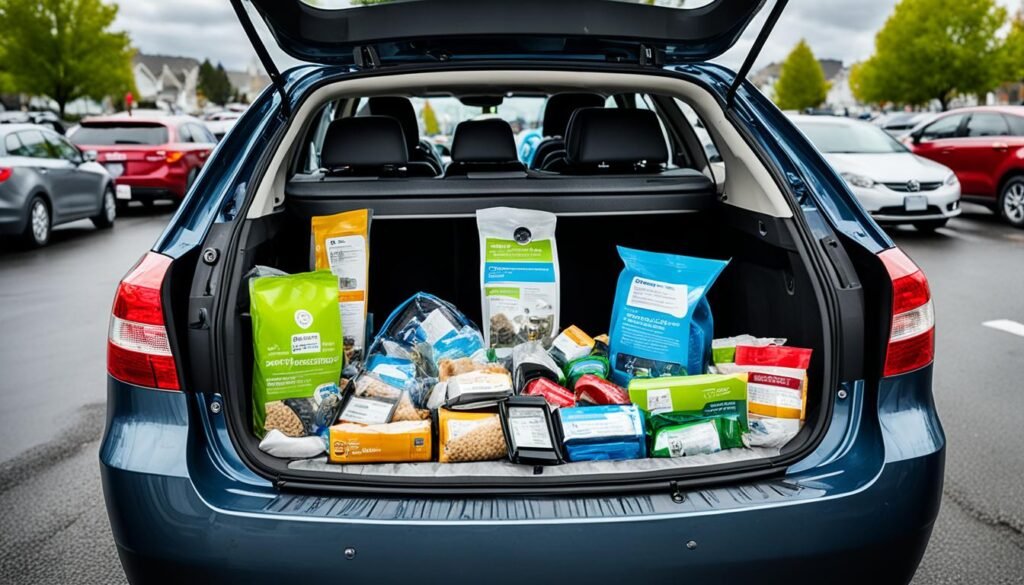
Staying Calm in Chaotic Situations
During an evacuation, it’s normal for both pets and their owners to feel stressed or anxious. However, maintaining a calm and composed demeanor can greatly help to keep your pets calm as well. Here are a few additional tips to keep in mind:
- Stick to routines: As much as possible, try to maintain your pets’ regular routines during an evacuation. Keep feeding times, playtime, and potty breaks as consistent as possible to provide them with a sense of familiarity and security.
- Show reassurance: Your pets will look to you for guidance and reassurance during stressful situations. Stay calm, speak to them in a soothing and comforting tone, and provide physical affection to help them feel safe.
- Use calming aids: Consider using natural calming aids such as pheromone sprays, anxiety wraps, or calming music specifically designed for pets. These can help reduce anxiety and promote a sense of calmness.
By taking proactive measures and implementing these pet evacuation tips, you can ensure the safety and well-being of your pets during emergency situations. Remember, being prepared is key to providing the best care for your furry friends when it matters most.
Pet First Aid and Medical Preparedness
Accidents and injuries can happen at any time, including during emergencies. That’s why it’s crucial to be prepared to provide basic first aid to your pets. Knowing how to administer immediate care can make a significant difference in their overall well-being and chances of recovery. In this section, we will cover essential first aid techniques for common pet injuries and recommend necessary medical supplies to include in your pet emergency kit.
First Aid Techniques for Common Pet Injuries
When faced with a pet injury, it’s essential to stay calm and act promptly. Here are some first aid techniques for common pet injuries:
- Cuts and Scrapes: Clean the wound with mild antiseptic or saline solution. Apply a clean bandage or dressing to stop bleeding and keep the wound clean.
- Fractures and Broken Bones: Stabilize the affected limb by using splints, towels, or other available materials as support. Be cautious when moving your pet and seek veterinary care immediately.
- Choking: If your pet is conscious, carefully check their mouth to remove any visible obstructions. If the obstruction persists, perform the Heimlich maneuver if it’s safe to do so. Seek veterinary assistance as soon as possible.
- Heatstroke: Move your pet to a cool and shaded area. Wet their fur with cool water and use a fan if available. Offer small amounts of cool water, but do not force your pet to drink. Seek immediate veterinary attention.
Necessary Medical Supplies for your Pet Emergency Kit
Having the right medical supplies in your pet emergency kit is crucial. Here are some essential items to include:
- Bandages and Dressings: Make sure to have a variety of bandages, gauze, and non-stick dressings to handle different types of wounds.
- Antiseptic Solution: Use a mild antiseptic or saline solution to clean wounds and prevent infections.
- Blunt-Ended Scissors and Tweezers: These tools can help you safely remove debris or foreign objects from your pet’s fur or wounds.
- Hydrogen Peroxide: Consult with your veterinarian first, but hydrogen peroxide can be used to induce vomiting in certain situations, such as ingestion of toxins.
- Medications: Keep a supply of any necessary medications your pet may need, such as antihistamines or prescription medication for chronic conditions. Make sure to check expiration dates regularly.
The Importance of a Trusted Veterinarian
During emergencies, having a trusted veterinarian is invaluable. They can provide guidance on first aid techniques, help you assess the severity of an injury, and advise on the appropriate course of action. It’s crucial to establish a relationship with a veterinarian before an emergency occurs. Schedule regular check-ups for your pet and discuss their specific needs and any pre-existing conditions.
Remember, while basic first aid can be helpful during emergencies, it is not a substitute for professional veterinary care. Always seek veterinary assistance for serious injuries or if you’re unsure about the best course of action.
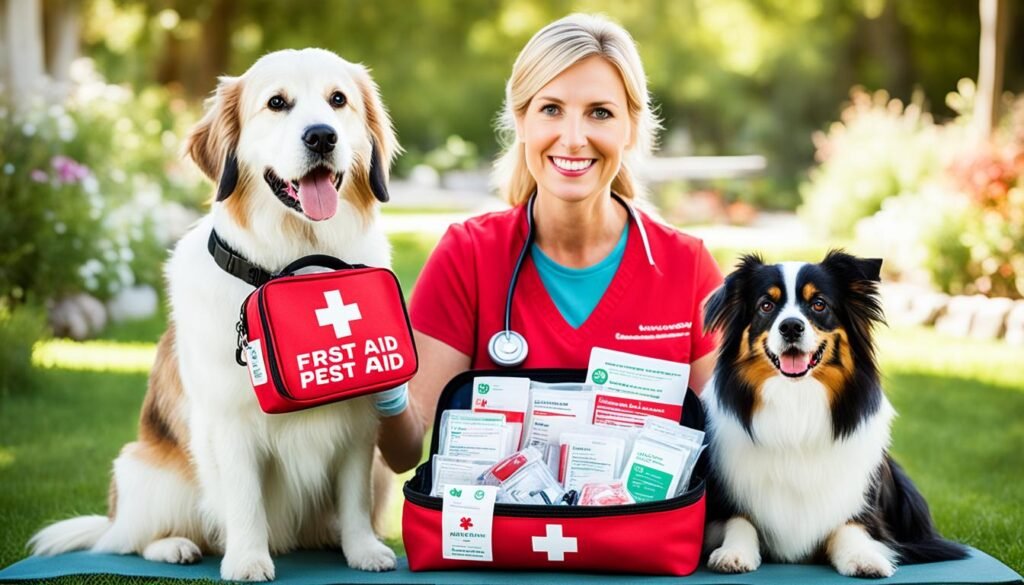
Next, we’ll explore different pet emergency shelter options available to you and how to ensure the safety of your pets during these challenging times.
Exploring Pet Emergency Shelter Options
During emergencies, the safety of your pets is a top priority. In such situations, it may become necessary to seek temporary shelter for your furry companions. Understanding the available pet emergency shelter options can help you make informed decisions and ensure the well-being of your pets.
Public shelters are one option to consider. Many emergency shelters now provide designated areas or separate facilities to accommodate pets. These shelters should have plans in place to address the specific needs of your pets, such as adequate space, food, water, and medical care.
Another option is boarding facilities that specialize in pet emergency care. These facilities are equipped to handle various emergencies and can provide a safe and comfortable environment for your pets. It is essential to research and familiarize yourself with these facilities in advance so that you can quickly make arrangements when needed.
Pet-friendly hotels can also serve as temporary shelters during emergencies. These establishments understand the importance of accommodating pets in crisis situations. Prioritize selecting hotels that are pet-friendly and have emergency plans in place to ensure the safety and well-being of your pets.
FAQ
Why is pet emergency preparedness important?
How do I create an emergency plan for my pets?
What should I include in my pet emergency kit?
How can I ensure my pet’s safety during evacuations?
What first aid measures should I take for my pet during emergencies?
What are the different pet emergency shelter options available?
RELATED POSTS
View all
